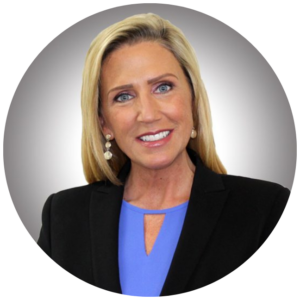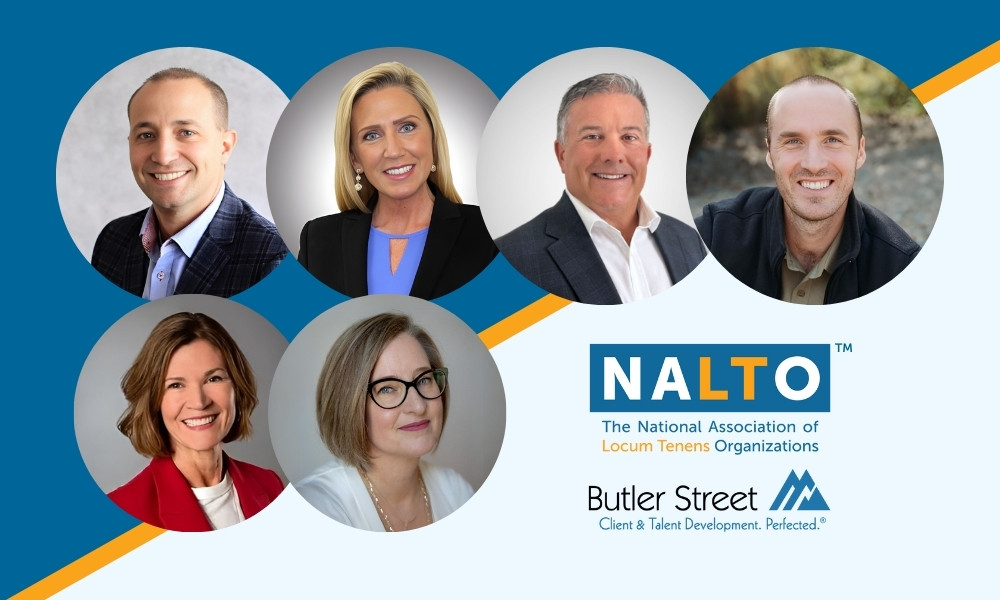On April 23, the National Association of Locum Tenens Organizations (NALTO) teamed up with management consulting firm Butler Street to host an interactive webinar examining the evolving landscape of locum tenens. This virtual gathering attracted nearly 130 participants and featured insights from NALTO board members, including:
- President Jarin Dana, Chief Financial Officer of Fusion Healthcare Staffing
- President-Elect Liz Hale, President of MPLT Healthcare
- Shawn Mullen, President of Interim Physicians
- Ethan McWilliams, Co-CEO of Wilderness Medical Staffing
Moderated by Butler Street’s Erika Bantz and Mary Ann McLaughlin, the discussion spanned hot-button issues from navigating mergers and acquisitions to adapting to new legislative changes, offering a wealth of strategies to thrive amidst industry shifts.
Let’s dive into the key takeaways and expert perspectives.
Maintaining Morale Amid M&A Shakeups
![]() The discussion began with a focus on mergers and acquisitions in the locum tenens sector. A poll revealed that 43% of webinar attendees were C-level executives or owners of locum staffing agencies. With this context, Jarin Dana provided targeted advice to help maintain staff morale during mergers.
The discussion began with a focus on mergers and acquisitions in the locum tenens sector. A poll revealed that 43% of webinar attendees were C-level executives or owners of locum staffing agencies. With this context, Jarin Dana provided targeted advice to help maintain staff morale during mergers.
Dana noted the intense activity in the locum space over the past two years, emphasizing the importance for sellers to envision their business post-transaction. He stressed the value of staff continuity and the critical need for a cultural fit with potential buyers, reminding sellers, “Your people are your greatest asset.”
Dana encouraged employees to actively align with the new company’s vision post-merger. He acknowledged the natural fear of change but urged calm, pointing out the opportunities that change brings.
“They [employees] may be thinking that they’ve got to get a new job,” he stated. “You need to recognize that any transaction will foster opportunities for existing employees. Hopefully, you’ll have a buyer who comes in and will only pour gas on the fire. I can assure you that’s the desire of each buyer.”

“Your employees are going to be wondering what’s happening, how it’s going to happen, etc.,” Hale said. “You need to make sure that message is coming to them with some authority and make sure you can answer the questions for them.”
She also suggested appointing a project manager on both sides of a merger to oversee the myriad details, ensuring accountability and adherence to key timelines and milestones.
Keeping Abreast of Locum Legislation

“Independent contractors have become a hot topic due to the gig economy,” McWilliams stated. “A lot of regulatory attention had been brought to light during the pandemic because of the nursing segment, not all of which has been good. There’s a risk that our industry might be accidentally regulated as a result.”
He expressed to his own US senator the crucial role locum tenens providers play in rural healthcare, explaining that any legislation hindering their work would directly affect his constituents.
“That meeting didn’t necessarily result in him going to bat for us and passing legislation, but you can be sure that if something like this ever comes across his desk, he’ll be thinking about how this will affect people in my state,” Hale said.

“The key for me is to have one person in our organization who is aware of these state laws,” Mullen said. “Sadly, there is not one place to find all of this information, but you can keep up with healthcare regulations at the US Department of Health and Human Services and monitor resources like Staffing Industry Analysts.” He concluded that “tracking these things is important because it can affect your decision about who you do business with.”
Becoming a Trusted Locum Advisor
The webinar wrapped up with discussions on how to capitalize on growth opportunities in the locum tenens industry despite shifting demographics, increased burnout, and the adoption of new technology.
When asked for advice on helping agencies attract younger physicians, Dana said it wasn’t about finding new strategies to attract different demographics but rather understanding what each person needs from an agency.
Dana discussed how younger physicians and doctors approaching retirement each look at locum tenens to regain flexibility and work-life balance. He said older physicians love to “have more of a white-glove experience with a dedicated recruiter,” whereas younger physicians “might be more independent“ and not rely as much on their recruiter.
When asked how facilities could partner with locum agencies to connect to the provider and “ensure continuity of care,” Hale said that, in her recent experience, it hasn’t been as difficult. She further stated that locum tenens was no longer seen as the Band-Aid response it once was.
“The relationships between facilities and locum tenens physicians have changed to become more of a planned part of the annual staffing [strategy],” Hale said. “They are not just seen as someone coming in to provide some vacation coverage.”
According to Hale, one of the best ways for agencies to enhance their relationships with facilities is to ensure providers are well-suited to the environment before placing their assignment.
“That means pushing facilities to understand their needs” ahead of time, Hale said. “We want to change the dialogue with facilities, so it’s not just about rushing to get them somebody and filling today’s need,” she said, “but making sure we can place someone who helps their permanent physicians and relieves their staff’s burnout. If we can do that, we can become their trusted advisor.”
That’s a Wrap
Throughout the interactive webinar, participants delved into topics from managing mergers effectively to anticipating legislative shifts and exploring new growth opportunities. As the industry evolves with new technology, demographic shifts, and regulatory changes, the strategies discussed will empower locum tenens agencies to succeed in the ever-changing healthcare staffing space.








